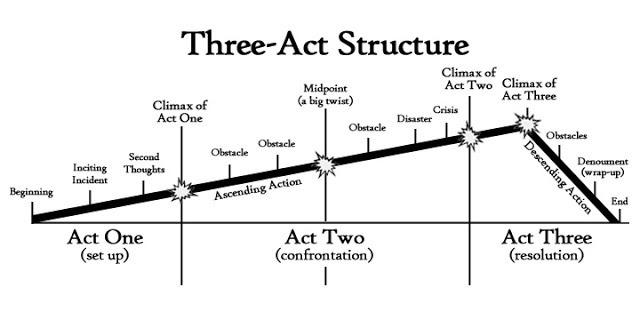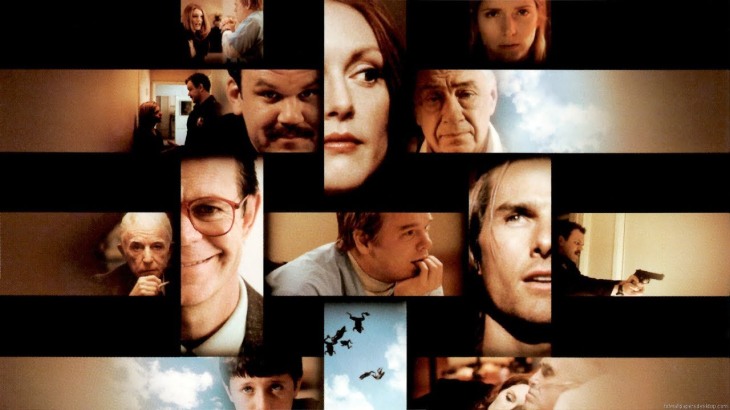Directed by: Wes Anderson
Cast: Ralph Fiennes [M. Gustave], Jude Law [Author], Tony Revolori [Zero Moustafa]
The Grand Budapest Hotel: A popular European ski resort in the 1930s, run by concierge Gustave H. with Zero, a junior lobby boy, becoming his friend and protege. Gustave prides himself on providing first-class service to the hotel’s guests. When one of Gustave’s lovers suddenly dies, he finds himself the recipient of a priceless painting and the chief suspect in her murder.
Inspired by: Writings of Stefan Zweig
My rating: 9/10

Narrative aspects
‘The Grand Budapest Hotel’, directed by Wes Anderson, is a film that stretches out the extent to which one’s imagination can be built upon and presented to an audience. Inspired by the works of Stefan Zweig, Anderson developed brilliantly multi-layered characters with intricate and lavish set design and a plotline that is captivating for an audience no matter if they like films with this one’s aesthetical layout or presentation. The film plays around with narrative, building a skeleton that seems as if it is a take on Christopher Nolan’s ‘Inception’:
- 1st level = A girl reading a book called ‘The Grand Budapest Hotel’ by a statue of remembrance
- 2nd level = Old ‘Author’ telling the story into the camera about his book ‘The Grand Budapest Hotel’ from when he worked there
- 3rd level = Young ‘Author’ meeting the elderly Zero Moustafa, who tells him the experiences he had when he was younger.
- 4th level = Young Zero Moustafa travelling on adventures with Gustave H. while being the lobby boy for The Grand Budapest Hotel.
- 3rd level = Young ‘Author’ meeting the elderly Zero Moustafa, who tells him the experiences he had when he was younger.
- 2nd level = Old ‘Author’ telling the story into the camera about his book ‘The Grand Budapest Hotel’ from when he worked there
This in-depth take on a story reflects how impactful and captivating the experiences of Zero and the event revolving around Gustave H. were in the history of the hotel as well as for the Republic of Zubrowka. Generations continue to talk and discover more about this particular part of history in the fictional world Wes Anderson created. There is a story within a story and each level of the plot is vital to the other one progressing. moreover, the fourth level of the story (as described above) is further divided into five different chapters, further giving the film the feel of the audience reading a visual book than watching a film. It steps out of the conventions of a film, combining and creating synergy with two different entertainment mediums. Also, it follows the idea of the film’s core plot being eventually written into a book that the young girl in the first level (see above) reads.
Infer & Deduce: ‘The Grand Budapest Hotel’ shares its name with the hotel in the film that serves as the main turning point in the plot as well as where the main character, M. Gustave H. works. It is the heart of the story while serving as a topic that generations read and talk about, as seen in the film. An audience immediately sees the relation and significance of the hotel to the entire plot of the film.
Technical Aspects
Wes Anderson is an auteur with a unique visual style. Where his narrative lacks in depth, the aesthetic in which he presents the world of stories makes his films visually pleasing and entertaining. He is truly an artist, using his films as a canvas to portray the world of his imagination.
Much like with his other films, Anderson incorporates unique camera movements that set his film aside from other films at the box office. Especially in The Grand Budapest Hotel, all camera movements consist of panning left and right, tilting up and down, dolly forwards and backwards and using a crane for moving the camera up and down. Rarely (i.e. 2 or 3 shots in the film), the use of hand-held shots are made. The camera movements complement the fairy-like setting for his characters as well as the homage he pays to a vintage look in The Grand Budapest Hotel, is apt for the time period in which it is set. Similarly, Anderson is more prominently known for the colour palettes he incorporates into the look of the entire film as well as different colour schemes from scene to scene. The colour palette in this film is bright but elegant, filled with purples, yellows, reds and pinks. These colours reflect some sort of special occasion’s colour scheme, or desired colours for desserts and pastries, an element that is closely associated with the hotel business in the film. The old aesthetic is also seen through the elaborate, time, setting and character-specific costumes and props that give implicit details on the personality of the variety of characters, the aspects of the locations used and the plot as well.
To add on, there is a lot of diegetic voice narration in the film, which helps to establish certain plot points from a third person point of view. Also, it reminds the audience of the ‘story within a story’ concept of the film, where the author is telling a story of Zero Mustafa. Moreover, the variety of aspect ratios used within the film (Cinemascope, 4:3 etc) helps to differentiate between the different levels of the story and help establish the time period in which each level takes place. Also, it is aesthetically pleasing!
Favourite Scene
This scene is one of my favourites. It is near the beginning of the film and introduces the two main protagonists of the film: Gustave and Zero. Gustave meets his new lobby boy and decides to interview him while he completes his daily errands, and the humorous side of both the characters is established in this introductory scene. While Gustave asks the new employee questions about his prior experience in the hotel business, Zero answers every question with a comedic ‘zero’, indicating his lack of experience and alluding to his name.
Gustave’s personality is understood with more depth through this scene as he is witnessed genuinely caring for the hotel he works at as a concierge and does not consider it as just a job. He is also the core powerhouse that the entire hotel operations runs on, as all his subordinates ask for his approval for certain hotel management aspects while he interviews Zero.
Visually, the scenes seem to have natural lighting (at least in the appearance) which contrasts with the unrealistic use of colour and costumes. Within the hotel, the setting is not over-illuminated as it would be expected in a fairytale-like surrounding that the hotel looks like. The lighting also aids with the saturated colours within the setting that enhance the tone and mood of this scene, and the entire film in general. This scene, being at the beginning, establishes the mood of the film through its array of bright colours. To add on, there are a variety of shot types, movements and angles in this short duration of the scene that also compliment towards setting the round-off idea and feel of the film that viewers can familiarise themselves with.
What would I do differently?
‘The Grand Budapest Hotel’ uses brilliant camera techniques, has a multi-layered story with intriguing characters and is aesthetically very pleasing to watch. Personally, I would not choose to change anything. It is the perfect movie for my own viewing and every time I watch it I enjoy it as if it is my first time.
Further Research Areas:
10 Old World Lodgings That Inspired The Grand Budapest Hotel
The Grand Budapest Hotel Complete B-ROLL (2014) – Wes Anderson Comedy Movie HD (YouTube)
LUXX Studios | Behind the scenes of Grand Budapest Hotel (YouTube)
Behind the scenes at the Grand Budapest Hotel – Telegraph
The graphic designer behind Wes Anderson’s “The Grand Budapest Hotel”
The Real-Life Muse Behind Wes Anderson’s ‘Grand Budapest Hotel’
The Magnificent Locations of The Grand Budapest Hotel
Is The Grand Budapest Hotel’s ‘Boy with Apple’ artwork plausible? – Guardian
The untold story behind The Grand Budapest Hotel’s ‘Boy with Apple’





